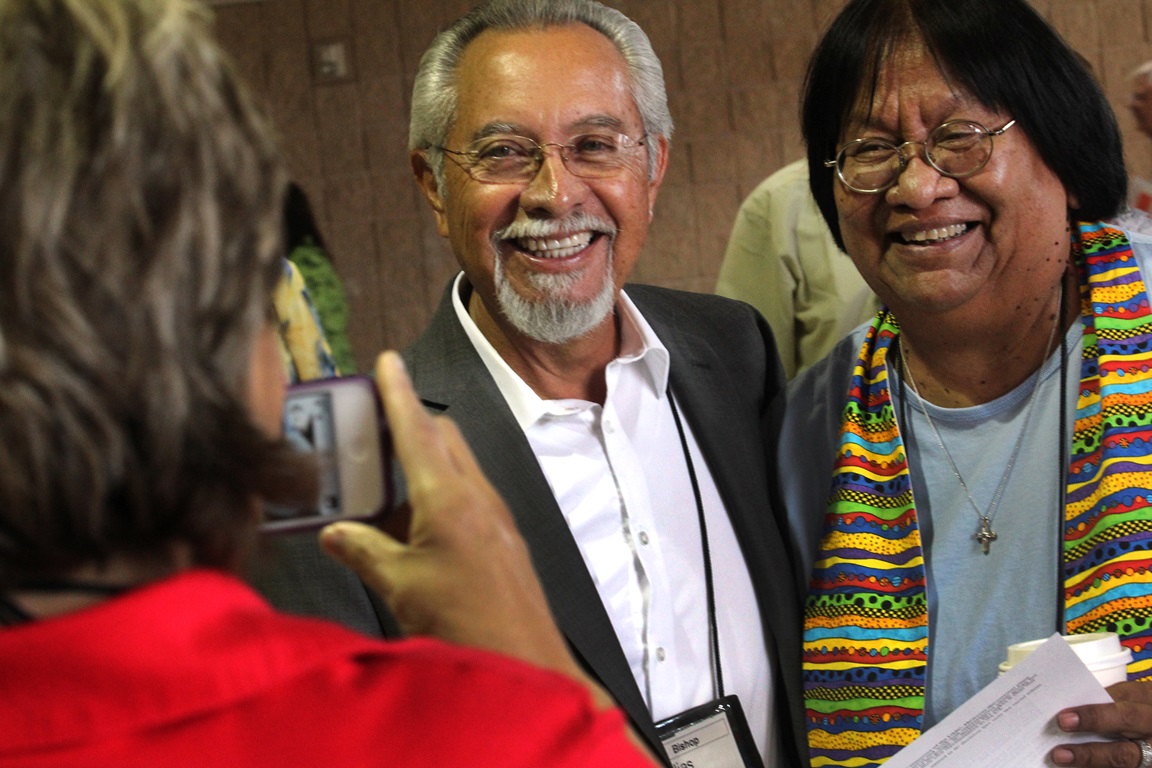Work as a Native American pastor in a majority-white denomination is not easy, but it’s needed.
What does it mean to be in ministry in The United Methodist Church as a Native American? What does it mean to build right relationships with Native Americans in church and country? As you read this, understand that I am purely speaking of my own experiences and what it means for me to be in ministry in The United Methodist Church as a Native American pastor. In other words: This is my story.
The Native American ministry I was involved with before considering taking the pulpit myself was not all that wonderful. In this ministry a Caucasian pastor taught that it was not right being Native while being Christian. The crises and atrocities Native people experienced were minimized, and, sadly to say, they didn’t even know they were being oppressed because it was all “done in the love of Jesus.”
I was very glad to leave when offered another job. When I entered the process for ordination I was told by the board of ordained ministry that I had “strikes” against me and that possibly no church would want me. One, I was Native American. Two, I was a woman. Three, I was divorced. And four, I was a single parent. But the six older gentlemen on the board approved me for ordination (and so get credit for ordaining me).
When I graduated from seminary I was told there was no church for me, so I was reappointed back to school. However, I took a job instead and worked in Flagstaff, Arizona. Into my second year working in Flagstaff, the Desert Southwest Annual Conference was meeting there, so I went to visit the conference and reacquaint myself with the bishop.
The following year I was asked by my annual conference to join the Desert Southwest Conference, so I did, and I was appointed to Native American Ministries in Phoenix. This was one of the happiest times of my ministry. The Native ministry was built on the legacy of the Rev. Harry Long. We kept the sweat lodges that were in the back of the church and opened up our church for other denominations to have their ministry. We also had an immigration program and a homeless shelter. We truly fed the hungry, clothed the naked, visited those in prison, visited those in the hospital and helped the poor. We learned one another’s tribal songs and welcomed anyone who wanted to worship with us into our fold.
Crossing cultures
Just about then we heard that United Methodist Churches were appointing racial ethnic pastors to white churches. I didn’t want to be reappointed to a white church, but I was told I must. I was anxious about my first cross-cultural appointment—and my first order of business was 11 funerals in a row. I had never conducted a funeral for a Caucasian person before. I knew it would be different, and it was. I had a funeral to conduct every week for 11 weeks.
The church had a slight relationship with the reservation next to it, but to me it was a relationship that could improve and offered a great opportunity to learn from each other. The majority of the church members didn’t want this, and they complained and threatened to leave. Since this was my first white church, I didn’t push it. The program died because of the lack of interest.
I was then reappointed to another church, and it felt worse than the first Caucasian church. There were some folks open to try new things, but always the majority ruled against it. I know this is how most churches operate, but when I pastored the Native church in Phoenix they were always open to trying new things—even new songs I’d bring back from a conference. Of course we would all end up in laughter because we knew we sang the wrong key, but we laughed together and tried again. And it wasn’t just one or two people who tried; it was the whole congregation that tried together. I don’t think I’ve ever experienced that with a Caucasian church, a whole congregation’s willingness to try something new.
I have learned through the years that education and humor will always bring me through the hard times. I’m always the teacher about culture and always trying to help people be sensitive to one another’s needs. I get laughed at, talked about and even complained about, but I don’t care because I want people to know that the Love of Christ is in all of us, no matter who we are or where we come from. I know my calling.
We have so much to learn from one another, about our different walks of life, and so when injustices happen to us we can be there for one another and stand up with one another, helping one another be strong and resilient. I hope that day will come for United Methodist Native Americans. Listen. Learn. Try something new, and watch yourself grow in your faith and understand God in ways you never imagined.
The Rev. Tweedy Sombrero Navarrete is Dine’ (Navajo) and pastor of Trinity United Methodist Church in Yuma, Arizona.
Originally published in Response magazine, November 2017.

